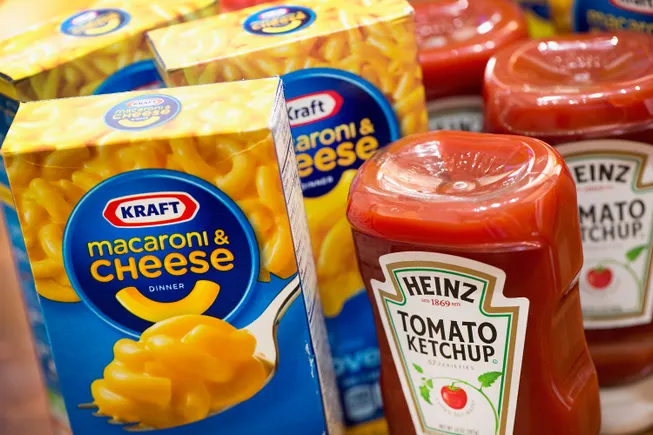Kraft Heinz, a major food and beverage maker, has announced plans to remove artificial colors from its products by the end of 2027. The company will also stop adding synthetic dyes to any new offerings. This decision comes as Kraft Heinz estimates that about 10% of its U.S. products by net sales currently contain artificial colors.
Specifically, Kraft Heinz stated that it will be removing dyes that are deemed “not critical to the consumer experience” and replacing them with natural colors. In cases where suitable natural replacements are not available, the company plans to develop new colors.
This move aligns with a broader trend in the food industry, as the Trump administration has been urging companies to eliminate synthetic dyes from their products. In April, the FDA requested that food and beverage manufacturers voluntarily remove six synthetic dyes from their products by 2027.
For years, food companies have defended the use of artificial colors, citing their safety as determined by regulatory agencies. However, growing consumer demand for healthier options and concerns about the potential health risks of artificial dyes have led companies like Kraft Heinz to reconsider their ingredient choices.
Pedro Navio, Kraft Heinz’s North America president, highlighted the company’s ongoing efforts to evolve its recipes. In 2016, Kraft Heinz removed artificial colors, preservatives, and flavors from its popular product, Kraft Mac & Cheese. While some of the company’s products still contain synthetic dyes, Kraft Heinz is committed to reducing their use across its entire portfolio.
Kraft Heinz is not alone in this endeavor, as other food companies have also announced plans to transition to natural ingredients. PepsiCo and McCormick are among the companies that have expressed their commitment to removing synthetic dyes from their products in response to consumer demand and regulatory pressures.
However, some industry experts have raised concerns about the timeline for this transition. Businesses will need time to secure a sufficient supply of natural ingredient replacements and assess the impact of new colors on factors such as product shelf life, price, and packaging.
Overall, the shift towards natural colors in food products represents a significant transformation in the industry. While challenges may arise during this transition, companies like Kraft Heinz are taking proactive steps to meet consumer expectations for healthier and more transparent food options.


